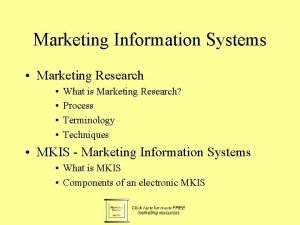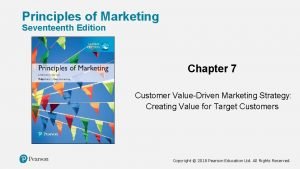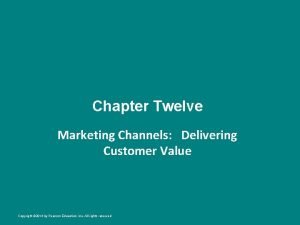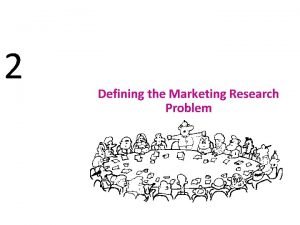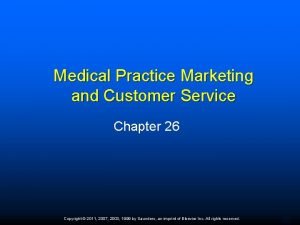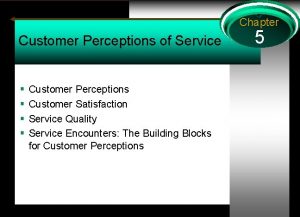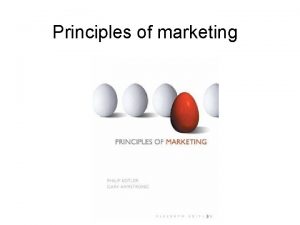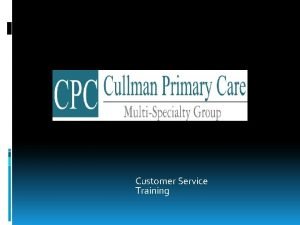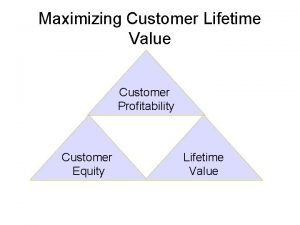Chapter 4 Marketing Research Marketing Information and Customer


















- Slides: 18

Chapter 4 Marketing Research

Marketing Information and Customer Insights Managing Marketing Information 4 -10

Marketing Research Steps in the Marketing Research Process Copyright © 2016 Pearson Education, Inc. 4 -21

Marketing Research Defining the Problem and Research Objectives Exploratory research Descriptive research Causal research Copyright © 2016 Pearson Education, Inc. 4 -22

Marketing Research Developing the Research Plan Secondary data is information that already exists somewhere, having been collected for another purpose. Primary data is information collected for the specific purpose at hand. Copyright © 2016 Pearson Education, Inc. 4 -25

Marketing Research Gathering Secondary Data Disadvantages Advantages - data may not be Relevant Lower cost Obtained quickly Accurate Cannot collect otherwise Current Impartial Copyright © 2016 Pearson Education, Inc. 4 -26

Marketing Research Primary Data Collection Copyright © 2016 Pearson Education, Inc. 4 -28

Marketing Research Implementing the Research Plan • Collecting the information • Processing the information • Analyzing the information Interpreting and Reporting Findings • Interpret findings • Draw conclusions • Report to management Copyright © 2016 Pearson Education, Inc. 4 -38

Sales Forecasting

SALES FORECASTING Who is affected by it? ü Ops – raw materials, support for existing products, ü ü ü warehousing, production equipment Finance – inventory, all finance statements and expectations, Wall Street Guidance Marketing – mix variables drive forecast and are effected by it, etc. Sales force – budgets, territory sized and # of reps, sales support, customer service HR – hiring in Ops, Mktg, Sales, all parts of the company, R&D – existing product support, new product investments ($ and direction of investment) All budgets across the company flow from sales budget

Impact of Erroneous Sales Forecast Functional area Too high Too low Production excess output, unsold products inadequate output to meet customer demand Inventory Finance Promotion overstock understocks idle cash shortage wasted expenditures insufficient expenditures to cover the market Distribution costly, insufficient to sell excess products inadequate to reach market Pricing reductions to sell excess products price increases to allocate scarce products Sales force too many salespeople, high selling costs too few salespeople, market not covered Customer relations money wasted on unneeded activities, resulting in lower profits unsatisfactory due to out-ofstock products Profits lower unit profits since expenses are high lower total profits because market not covered

Qualitative Sales Forecasting Techniques Executive/Owner Judgment Surveys § Customer forecasting survey § Sales force forecasting survey § Expert forecasting survey § Delphi technique (panel of experts)

Quantitative Sales Forecasting Methods Averaging ü Simple averages ü Moving (rolling) averages ü Exponential smoothing Time-Series Analysis ü Trend Analysis ü Cycle analysis ü Seasonal analysis

Quantitative Sales Forecasting Techniques Regression Analysis: Predicting sales based on the relationship between past sales and one or more variables ü Simple Regression: relationship between 1 independent ü variable and 1 dependent variable (sales) Multiple Regression: shows strength of relationships between multiple independent variables and dependent variable (sales) Caution 1: no one has yet been able to create a formula that guarantees accurate output Caution 2: correlation does NOT equal causation

Other Sales Forecasting Techniques Market Tests ü Making a product available in the marketplace and measuring purchases and consumer responses § Test full mix on limited scale § Search for test markets that look like your national target, but on smaller scale

Assumptive Reasoning (Chain Ratio) Break a problem down into “knowable” parts, then rebuild it using reasonable assumptions for those parts

Market Share-Based Forecast 1. Determine the market size a) Actual best; potential if actual is unknown 2. Determine the market share you will obtain a) Excellent justification of share figure(s) b) “We think…” is insufficient 3. Translate share into units and dollars Market share is after-the-fact calculation; measures success of marketing plan and execution

Business Plan Sales Forecasting Exhibit #2: Market Quantification Year Tot Mkt Potential (# Customers)* Mkt Growth Market Projection** Share*** Annual Unit Sales Product Year 1 Year 2 Year 3 Year 4 Year 5 * How did you determine your market potential? Identify key sources and assumptions Unit Price or Annual $ Revenue Weighted ASP ** Actual market or market potential. How did you determine the growth projection(s)? Identify key sources and assumptions *** How did you determine your market share? Indicate key sources and assumptions **** How did you determine your unit forecast? Indicate key sources and assumptions
 Finer segmentation strategies
Finer segmentation strategies Marketing information systems and marketing research
Marketing information systems and marketing research Marketing information systems and marketing research
Marketing information systems and marketing research Marketing information systems and marketing research
Marketing information systems and marketing research Marketing information systems and marketing research
Marketing information systems and marketing research Marketing information systems and marketing research
Marketing information systems and marketing research Marketing information and customer insights
Marketing information and customer insights Importance of rest
Importance of rest Customer relationship management and customer intimacy
Customer relationship management and customer intimacy Customer relationship management and customer intimacy
Customer relationship management and customer intimacy Intimacy
Intimacy Pengertian customer relation
Pengertian customer relation Beyond customer satisfaction to customer loyalty
Beyond customer satisfaction to customer loyalty Chapter 7 customer driven marketing strategy
Chapter 7 customer driven marketing strategy Exclusive distribution channel
Exclusive distribution channel Information technology and customer relationship management
Information technology and customer relationship management Market research problem definition
Market research problem definition Creating customer relationships and value through marketing
Creating customer relationships and value through marketing Medical practice marketing and customer service
Medical practice marketing and customer service

